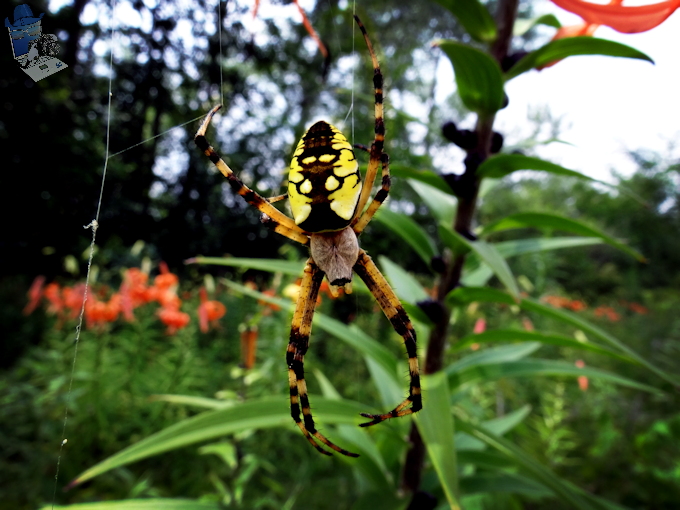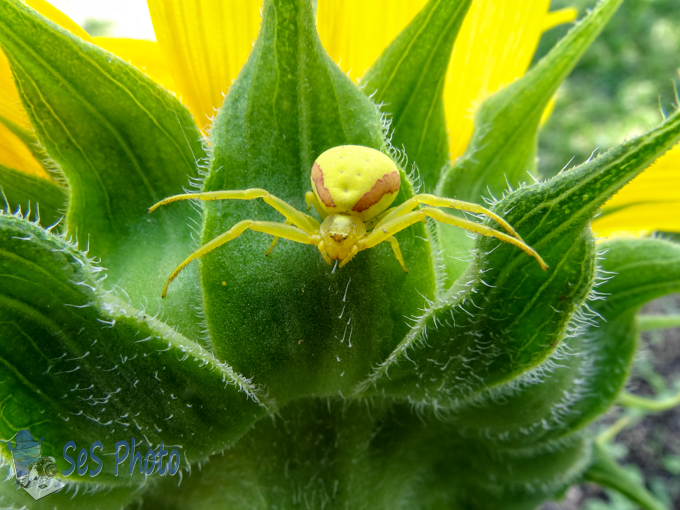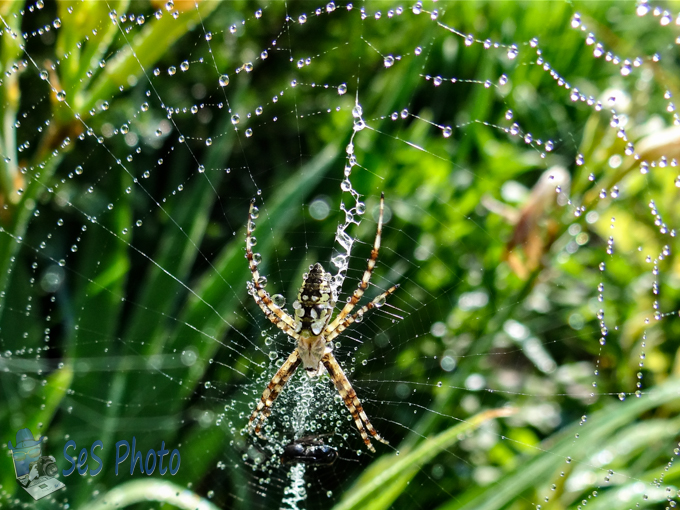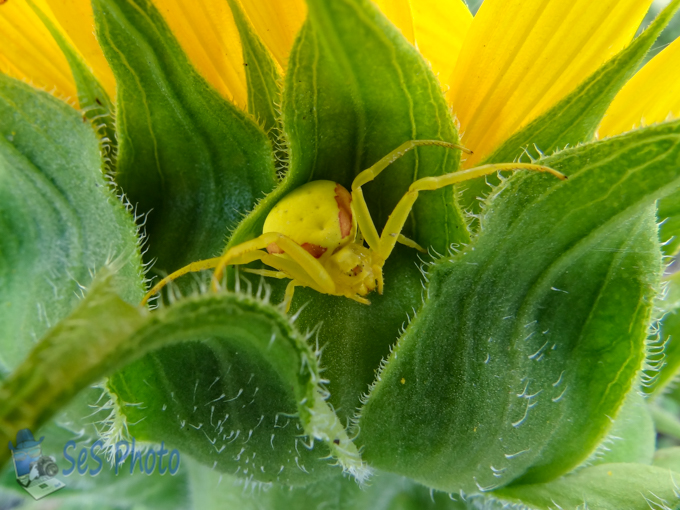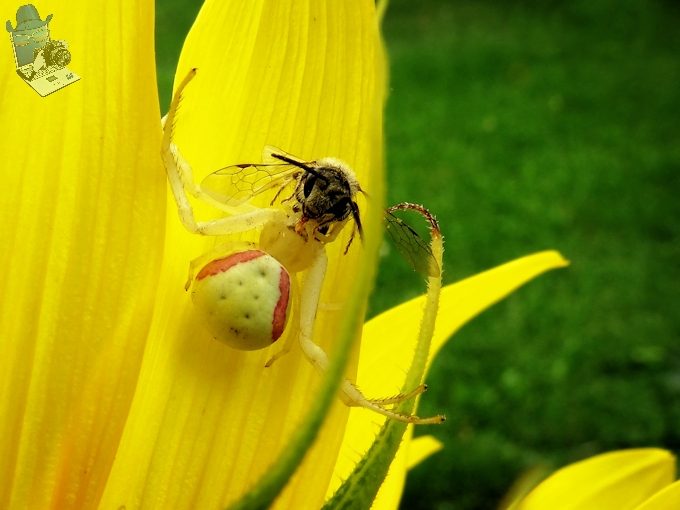I know this won’t be a popular photo due to it’s subject matter but I was sad to see that the highway department had cut the road ditches and cut many of the lilies I was taking pictures of the other day and they cut down where this Black and Yellow Argiope spider had built her web. (Also called Yellow Garden Spider, Writing Spider, Yellow Garden Orb Weaver, or Golden Orb-weaver.)
I had almost run into the web as I was weaving in and out of the lilies taking pictures. I got close enough that I scared the spider off her pretty web that has what looks like a zipper in the middle of the web. It always amazes me how they can build a web with such a fancy design and so delicate. (I always called them the zipper-stitched spider because of the pattern on the web.)
I had stopped yesterday to verify what kind of lilies they were since I didn’t take close up of the bottom leaves and hadn’t stopped a second time since it was solid poison ivy all around the lilies. I realized that since I was watching how I stepped on the poison ivy, I never took a picture of her web, only where I scared her to and now the web is gone.
(Course I was taking a different spider picture yesterday, a bright solid yellow one and I got a little too close as she climbed onto my camera and then put a web silk across my lens. So I have another spider picture to show some day.)
Black and Yellow Argiope
